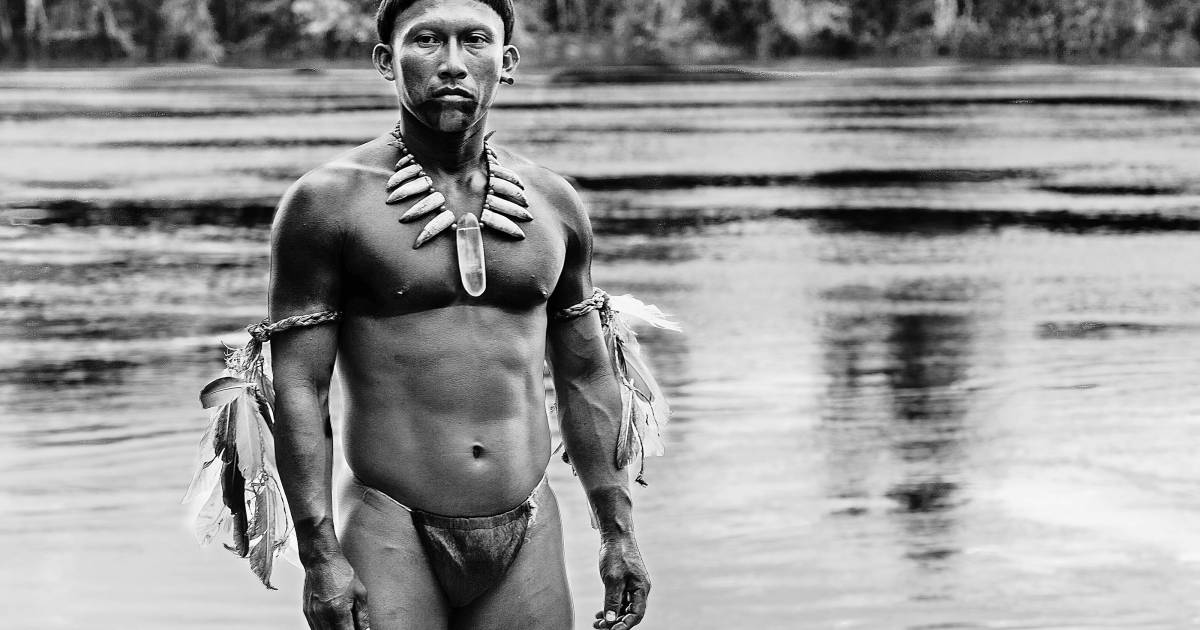Going in to see ‘Embrace of the Serpent’ I wasn’t entirely sure what to expect. From various sources, including promotional material and critics, I was to understand that it would be somewhat echoing an ‘Apocalypse Now’ vibe only replacing the Vietnam War with a war of cultures harboured between the peoples of the Amazon during the late nineteenth century. These expectations were proven, to my surprise, to be meek in comparison to the complexity and texture of Embrace of the Serpent.
Ciro Guerras tragic tale of the plight of the Amazonian peoples during this difficult period in their history was based on the academic diaries of Theodor Koch-Grunberg and Richard Evan Schultes, both of whom appear as characters. Perhaps it is on account of this factual basis, along with the incredible craft of the artists involved, that makes the experience feel so incredibly real. The ideas that it plays with are alientating yet fascinating and until you see Embrace of the Serpent you cannot truly begin to imagine just how provocative and engaging it is.
The narrative imitates the Amazon River itself in the fact that it is a steadily paced journey which occasionally stops for certain key events. The pacing really is fantastic and it simply does not allow you to get bored at any point. While there are many tranquil and even joyful scenes throughout, they are complemented by moments of incredible violence, depravity and horror that will truly stun the audience. This balance of joy and depravity seems to echo in the very heart of the piece.
If you were to pick out a message, it seems the obvious question lies with civilisation, mankind and how we define these concepts. However, the filmmakers seem to avoid pitting the ‘savage Amazonians’ against the ‘civilised white men’ and on the other side they do not glorify the ‘simplicity of the tribesmen’ in comparison to the ‘brutality of westerners’. Instead, they very tastefully compare and contrast the aspects of both cultures and societies and overall do not present them as two opposing extremities but rather simply as men. The cruelty in the film relies more on historical fact rather than fulfilling a need for shock value.
While the cruelty of western Catholicism is portrayed in the segment set in the Mission with the Spanish priest who tortures the children to “civilise” them, even worse atrocities are committed in the same Mission thirty years later by Amazonians who have cultivated some pseudo-Christian cult. There is a moment in the film where the reclusive Amazonian protagonist, Karamakate, is singing an old song of his ancestors. Later in the film, Dr Schultes pulls out a gramophone and begins playing Handel which he mentions, reminds him of his father’s house in Boston. These reflective scenes throughout are clearly intentional and they show that the point is not to polarise the differences between the white men and the Amazonians but rather to familiarises them and it exhibits that in all their cruelty and joy men remain the same.
The choice to present the final cut in total monochrome was an interesting one and before seeing it myself I was somewhat apprehensive that it would not be entirely appropriate in the effect it attempted to achieve. I was grandly mistaken. Being in black and white is one of its most crucial technical elements. It allows the scenes to adopt a sense of antiquity and some stills genuinely look like they could have been lifted from the illustrations of Grunberg himself. Furthermore, in the evening scenes, the black darkness met with harsh sources of moonlight and fire creates an intense chiaroscuro which is visually stunning. The lack of colour actually helps focus the audiences gaze upon whatever the director wants them to be looking at during each scene and it works perfectly.
Sound was also a big technical point for me, particularly with the nature of the jungle. As the film was without colour, the incredible palette of the Amazon was lost but instead the filmmakers used sounds to imitate the same effect. The sounds of water rushing or leaves moving are so loud at times that it becomes almost intimidating but it aptly represents the nature of the jungle and in turn provides the sensual stimulation that allows us as the viewer to remain totally engaged.
The film was, if nothing more, a stunning and uncompromising window into a period of history which is rarely seen in the west. The approach it took to translate the source material was tasteful and intelligent while providing a very relatable viewpoint for the audience. The film raises a lot of moral questions, many of which I still cannot quite get my head around, but even putting this aside ‘Embrace of the Serpent’ stands on its own as a technical masterpiece which I would recommend wholeheartedly.
Some of the coverage you find on Cultured Vultures contains affiliate links, which provide us with small commissions based on purchases made from visiting our site. We cover gaming news, movie reviews, wrestling and much more.



